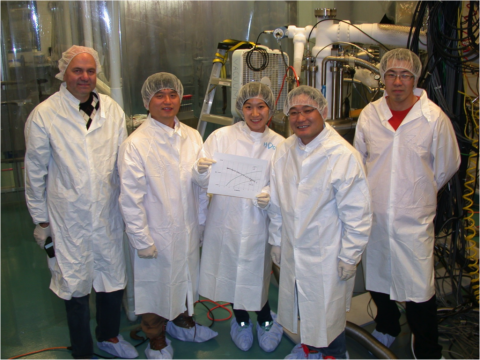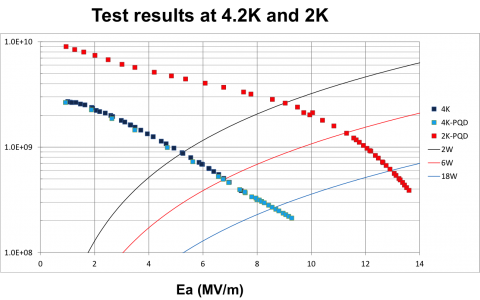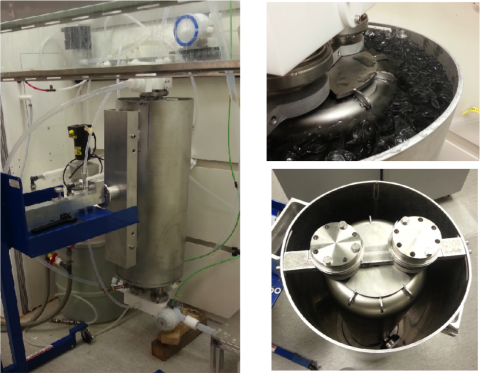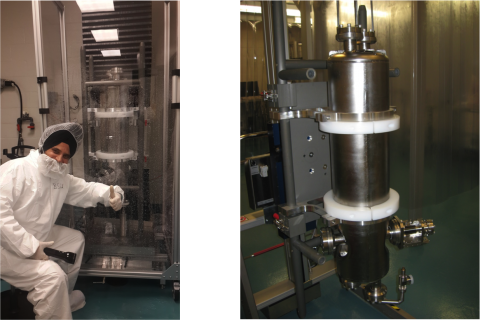



With a new accelerator research complex in construction and slated for operation in 2021, Korea’s Rare Isotope Science Project (RISP) is collaborating with world experts. RAON, the proposed accelerator facility, will enable investigations into many areas of fundamental research by creating isotopes using both ISOL and in-flight fragmentation techniques. The complex is designed to house three accelerators; one cyclotron and two heavy ion linear accelerators – requiring about 500 superconducting radiofrequency (SRF) cavities. Where better to learn about cavity design, manufacturing, processing and testing than TRIUMF’s SRF Group.
First connected through a workshop involving both the Accelerator and Science Divisions at TRIUMF a few years back, the Korean researchers have developed a collaborative relationship with the SRF team at TRIUMF. In December, the first of two prototype SRF cavities made in Korea for RAON were sent for testing to TRIUMF. As a second part to the collaboration two other cavities are being designed at TRIUMF to be manufactured by PAVAC Industries of Richmond, BC. The existing partnership between TRIUMF and PAVAC was a draw for the Korean team who will need about 500 SRF cavities for the accelerator.
RISP does not presently have superconducting radiofrequency (SRF) processing and testing facilities. By partnering with TRIUMF, the team gets early performance feedback on their SRF cavity quality but also benefit from working side-by-side with the experts in the TRIUMF SRF group. Dong-O Jeon, Head of the Accelerator Systems Division, said “We have closely collaborated with TRIUMF, especially SRF group from the early stage of the project. We are very pleased that partnering with TRIUMF enabled us to test our prototype.”
To test the SRF cavity, it must first be processed in a chemical bath and rinsed (see photos at right). After this, the cavity requires assembly in an ultra-clean environment to avoid contamination or debris affecting the quality of the cavity. Then, the cavity is assembled into a cryostat where liquid helium is introduced to cool the cavity to 2 Kelvin (-271°C). At this point, the team tests the cavity’s performance and determines if the cavity is of sufficient quality for use in the accelerator facility.
Four colleagues from RISP arrived in December to assist with test preparations. Both TRIUMF and RISP personnel, with strong support from TRIUMF’s design office and machine shop, were committed to get a result before the holidays. The cavity was tested with excellent results. In addition, RISP engineers were able to troubleshoot their electronics they are developing for their facility. Bob Laxdal, Head of the SRF Department, said “The results are a wonderful Korean/Canadian Christmas present that confirm the quality of the TRIUMF processing and the soundness of the first Korean prototype. Both groups are very pleased with the achievement.” Further tests of the RISP cavities will be progressing through early 2015.
Photos, from top: TRIUMF and RISP colleagues; test results; chemical processing of cavity, and; assembly of cavity into cryostat.
–Melissa Baluk, Communications Coordinator
